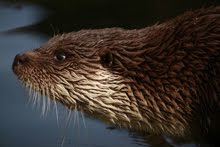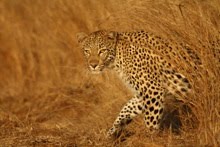On Sunday afternoon, the wife and I headed out to our local birding "patch": its a lovely little pond, frnged with reeds and rushes, surrounded by fields, and with a spectacular gallery of overlooking mountains. I only "discovered" the spot a few weeks ago after a friend asked if I had been there. Needless to say, I am now hooked. Sunday was a lovely day. Just as we got to the pond, I saw another birder there (one could tell by the cumbersome piles of optical equipment hanging off of various limbs and "tripodded" at the ready). Now this is not a common sight in Tirol. Spinning around I got my second unusual sight. A little falcon sitting on the line. At first I took it for a kestrel. But one look at her light wannabe hood dispelled that misconception.
Sunday was a lovely day. Just as we got to the pond, I saw another birder there (one could tell by the cumbersome piles of optical equipment hanging off of various limbs and "tripodded" at the ready). Now this is not a common sight in Tirol. Spinning around I got my second unusual sight. A little falcon sitting on the line. At first I took it for a kestrel. But one look at her light wannabe hood dispelled that misconception.
 Sunday was a lovely day. Just as we got to the pond, I saw another birder there (one could tell by the cumbersome piles of optical equipment hanging off of various limbs and "tripodded" at the ready). Now this is not a common sight in Tirol. Spinning around I got my second unusual sight. A little falcon sitting on the line. At first I took it for a kestrel. But one look at her light wannabe hood dispelled that misconception.
Sunday was a lovely day. Just as we got to the pond, I saw another birder there (one could tell by the cumbersome piles of optical equipment hanging off of various limbs and "tripodded" at the ready). Now this is not a common sight in Tirol. Spinning around I got my second unusual sight. A little falcon sitting on the line. At first I took it for a kestrel. But one look at her light wannabe hood dispelled that misconception. Seven years not having seen a red-footed falcon (Falco vespertinus, Rotfußfalke) and it seems I had gotten a little rusty. I took me a good minute to be sure what she was. As I looked about, we found at least 7 red-footed falcons about (only two adult males). They would glide over the field, pick up a flying "May beetle" and, in typical red-footed falcon style, eat it with both feet in the air (incidentally, the Milvus kites also like to do this). Between these short feeding forays, they would head back to a power line and sit for a bit. Tangentially, it occurs to me that maybe the life of a red-footed falcon was a little less interesting before power/telephone lines.
Seven years not having seen a red-footed falcon (Falco vespertinus, Rotfußfalke) and it seems I had gotten a little rusty. I took me a good minute to be sure what she was. As I looked about, we found at least 7 red-footed falcons about (only two adult males). They would glide over the field, pick up a flying "May beetle" and, in typical red-footed falcon style, eat it with both feet in the air (incidentally, the Milvus kites also like to do this). Between these short feeding forays, they would head back to a power line and sit for a bit. Tangentially, it occurs to me that maybe the life of a red-footed falcon was a little less interesting before power/telephone lines.It seems we only really get these little falcons here at migration time when they move up from the dryer savannas and grasslands of southern Africa in to the Palaearctic steppes to breed. They make little stops on their journey to fill up on insects in the spring-touched fields (basically birdy road-side service stations).
To identify the females and youngsters, keep a look out for the indistinct face mask, buff underparts with varying degrees of streaking (most adult females tend to have only a very little bit of streaking on the side of the belly and chest). She is barred grey on the back and wings.
 Adult males are easy: dark slate grey everywhere, except for the red of feet, undertail, and face.
Adult males are easy: dark slate grey everywhere, except for the red of feet, undertail, and face.Red-footed falcons breed in loose colonies, but roost colonially during the non-breeding season. Nests are often "adopted" from various species of corvids and individuals can live at least 13 years.
Their horizontal flying speed is about 46 km/h, about the same as for most other raptors (Bruderer B 2001 Ibis 143). Evidently (and not unexpectedly), 46 km/h is just too quick for a couple of little bugs.
The German wikipedia entry for the red-footed falcon is pretty good: http://de.wikipedia.org/wiki/Rotfu%C3%9Ffalke so if you can read German and are interested, it is really worth checking out.
In the event you were wondering, many of the pretty bird pics are not mine: when I want to make a point (or just for beauty) I include a "creatve commons" photo from flickr. If the photos are not ine then I always provide a back link to the original location where I found the photo.






.jpg)



.jpg)








.jpg)



No comments:
Post a Comment